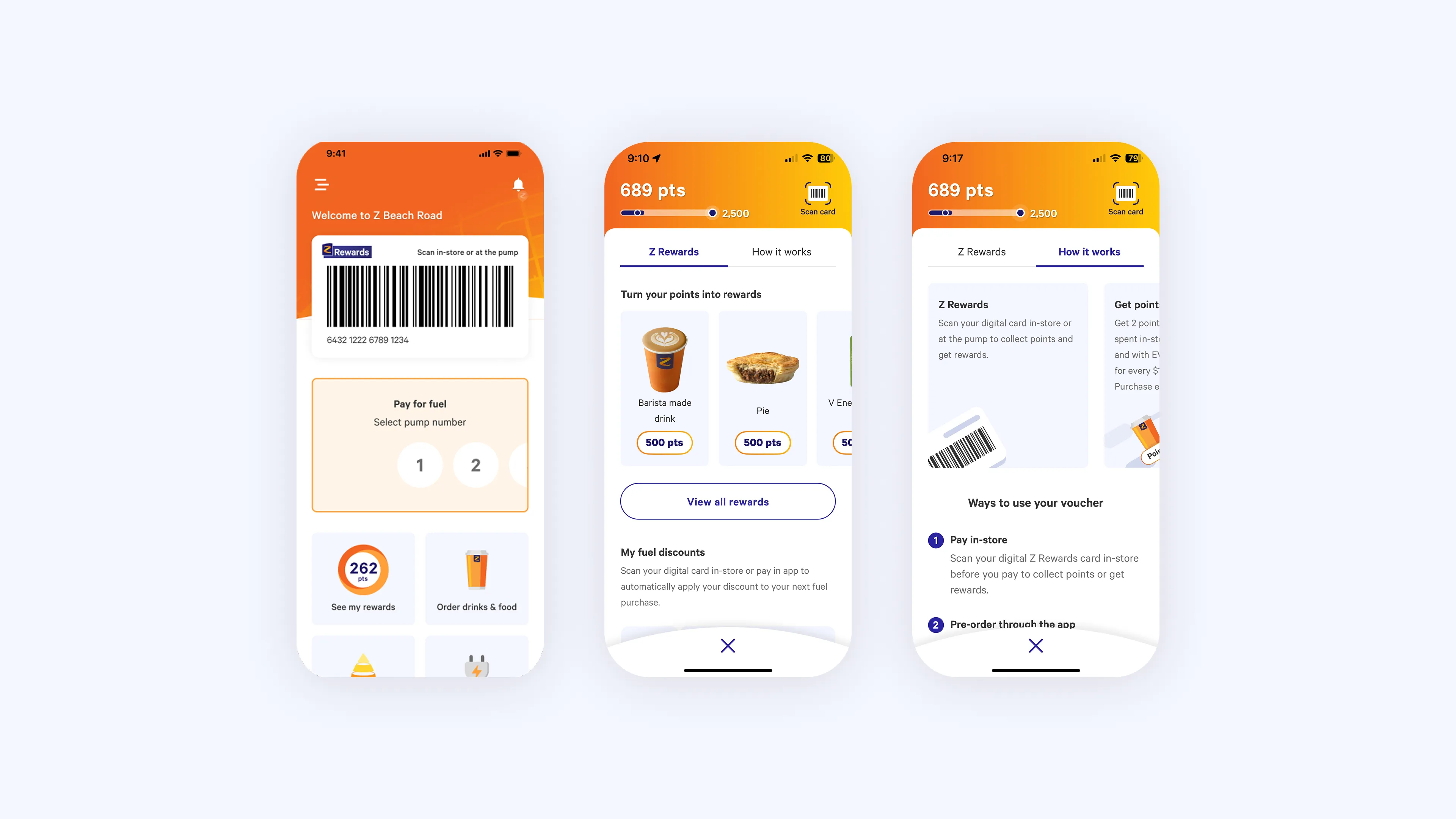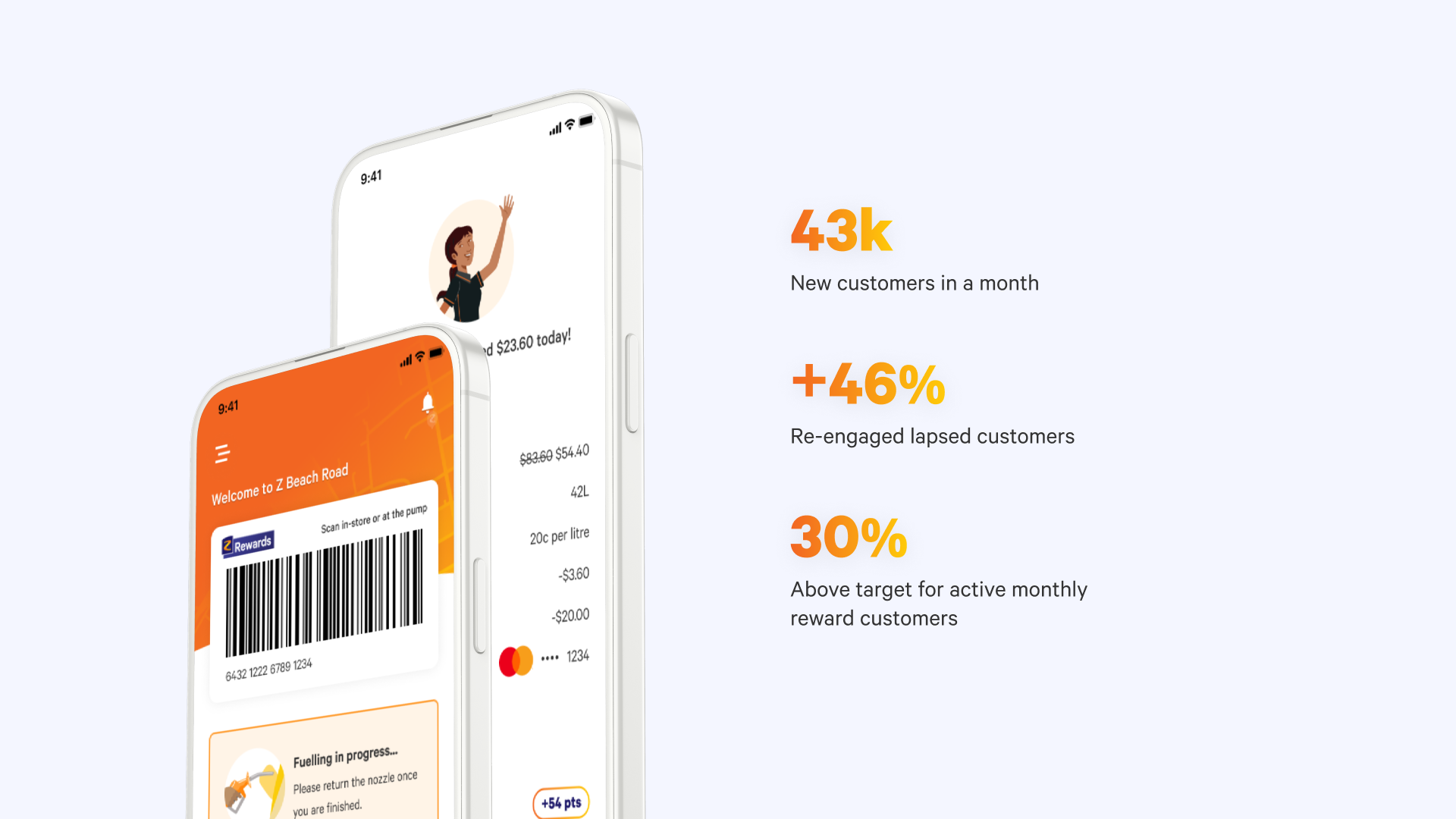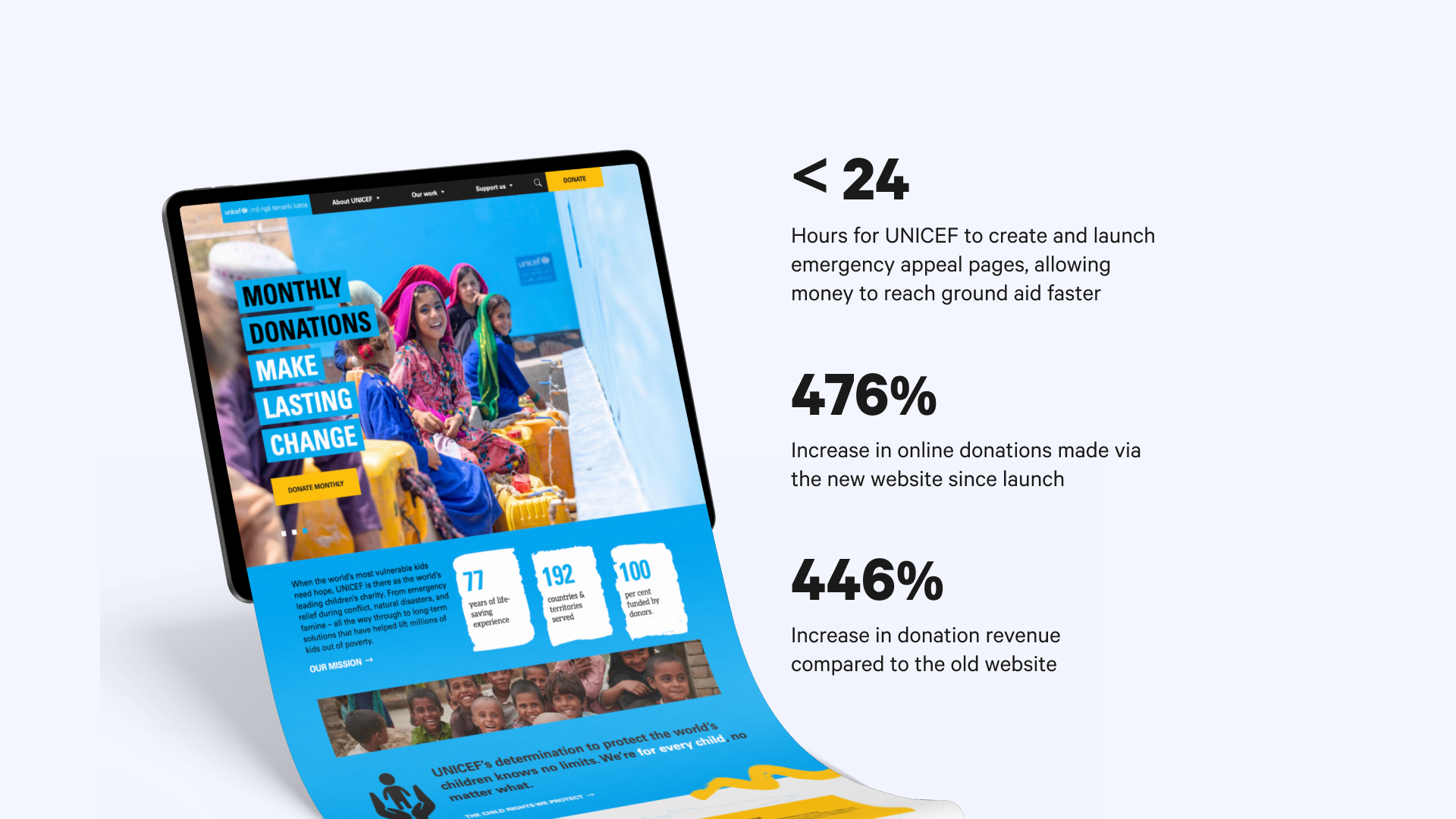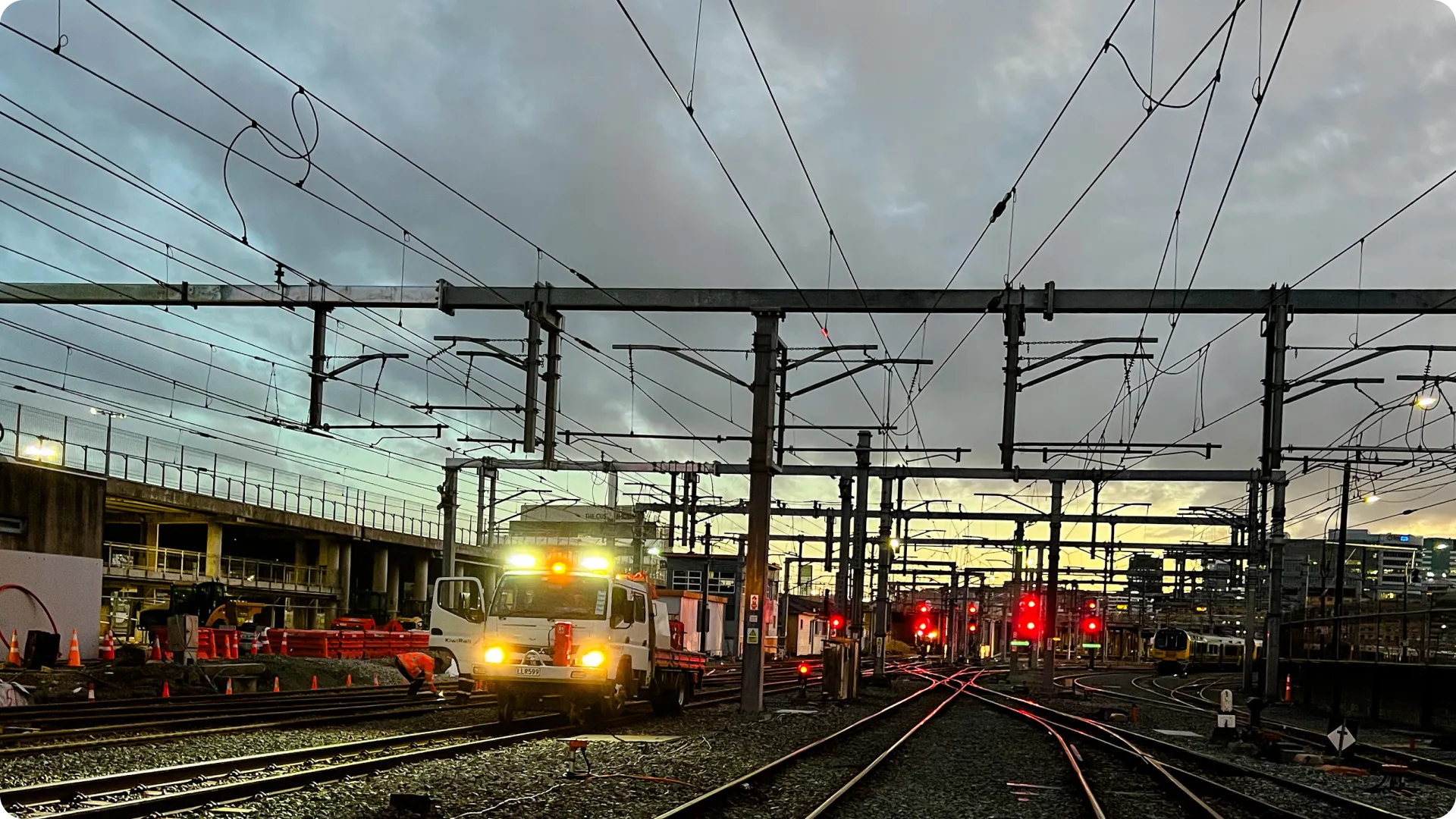
KiwiRail
2023-2024
Product Design Lead
Product Lead
Delivery Director,
Engineering Director,
Engineering Director,
KiwiRail faced critical safety and efficiency challenges within their rail corridor operations. Manual paper-based safety processes were causing productivity losses contributed to several near-miss incidents. As Design Lead, I co-led a digital transformation initiative - the Digital 902 App with QR code based worker tracking to address these issues, resulting in an 80% time saving from the current manual process and an estimated $XX million annual operational cost reduction.
Through a journey of discovery with KiwiRail, immersing ourselves in the day-to-day challenges faced by construction crews, we gained invaluable insights into the complexities of the existing system.
Extensive stakeholder engagement with over 500 KiwiRail employees across all levelsIn-depth interviews with safety officers and track workersOn-site observations to witness the current process in actionComprehensive journey mapping of the protection process—the first time KiwiRail had seen a complete view of on-site protection.
Project challenges
Additional project challenges included:
- Extremely low appetite for risk given the life-or-death safety implications
- Users with varying levels of technical literacy
- Union approval requirements at every stage gate throughout the project
- "Consultant fatigue" from previous vendors promising solutions without delivering
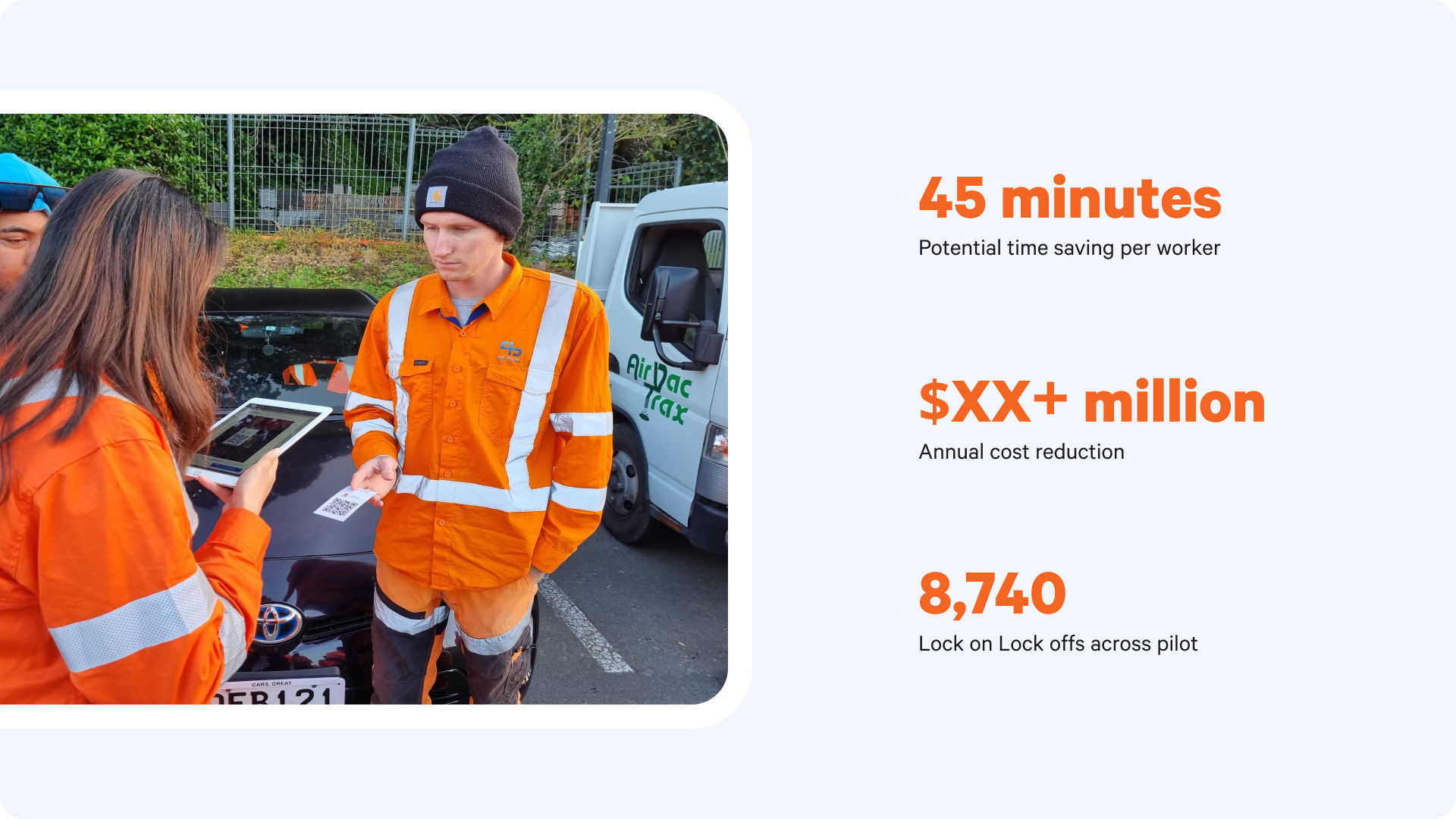
Through a journey of discovery with KiwiRail, immersing ourselves in the day-to-day challenges faced by construction crews, we gained invaluable insights into the complexities of the existing system:
- Extensive stakeholder engagement with over 500 KiwiRail employees across all levels
- In-depth interviews with safety officers and track workers
- On-site observations to witness the current process in action.
- Comprehensive journey mapping of the protection process—the first time KiwiRail had seen a complete view of on-site protection
Working within a rail corridor presents significant safety risks. The existing system required workers to physically write down their details and attach a physical padlock to a board, representing their presence in the corridor. This "lock on" system had several critical shortcomings:
- The process was time-consuming and error-prone
- Illegible handwriting and language barriers created communication difficulties
- Paper records provided no real-time visibility of corridor occupancy
- The physical padlock board provided no digital record or analysis capabilities
- Current processes could not easily track worker hours for fatigue management
- Without photo verification, Protectors struggled to remember names when dealing with many new workers daily
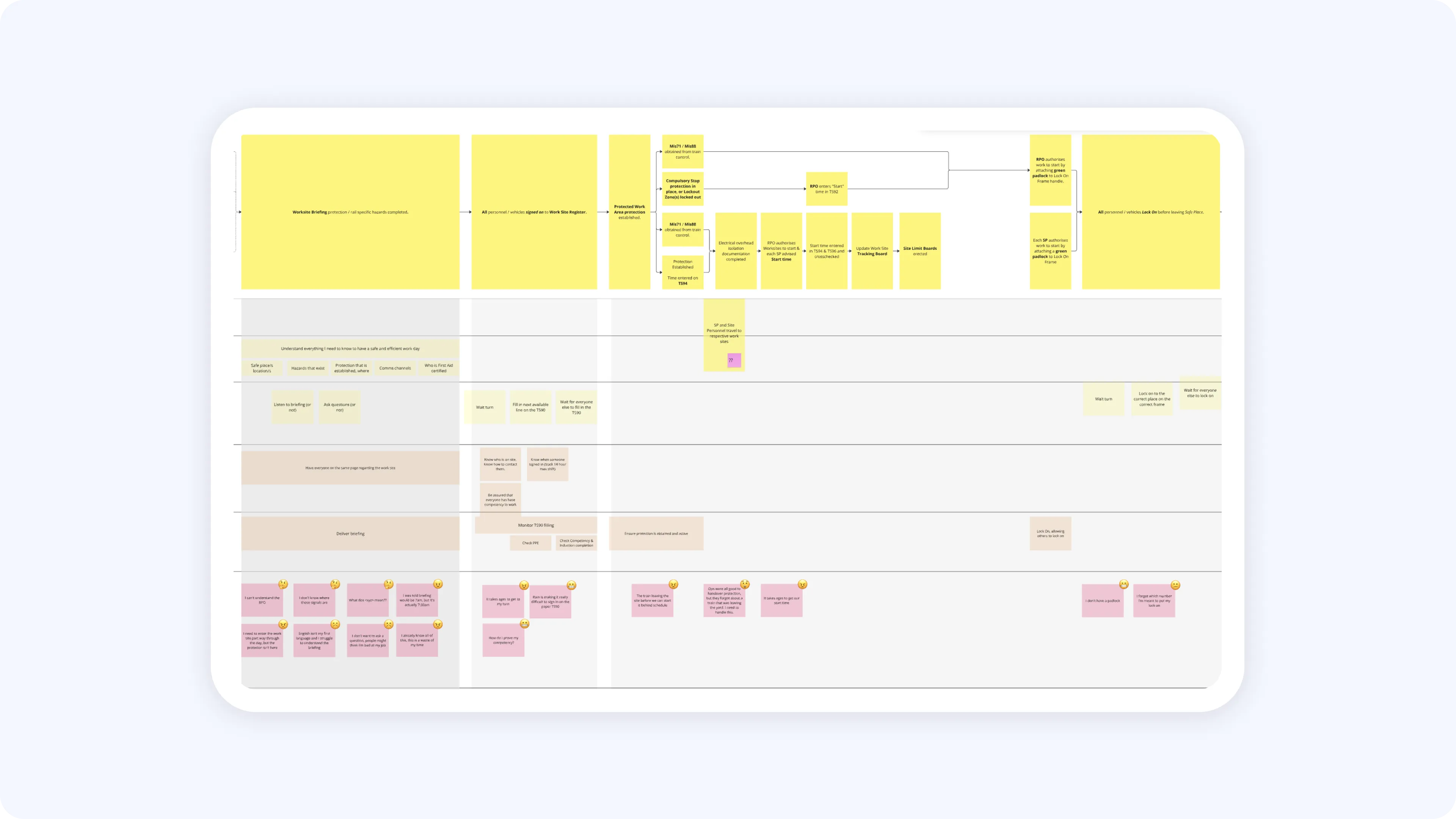
Alignment through co-design
Following our discovery work, I facilitated a 30+ person co-design workshop—a first for KiwiRail—bringing together representatives from various roles including Protectors, train drivers, union representatives, and leadership from IT and physical infrastructure.
This is the first time KiwiRail had worked directly with end users when creating a digital solution.
When I joined the project, the client relationship was strained. I transformed this into a productive partnership by:
- Taking time to understand the stakeholders as people.
- Providing public recognition for their contributions.
- Establishing clear expectations on what we could address within constraints.
- Practicing radical candor in all communications.
Both client stakeholders and internal team members recognised this collaboration as their most successful to date.
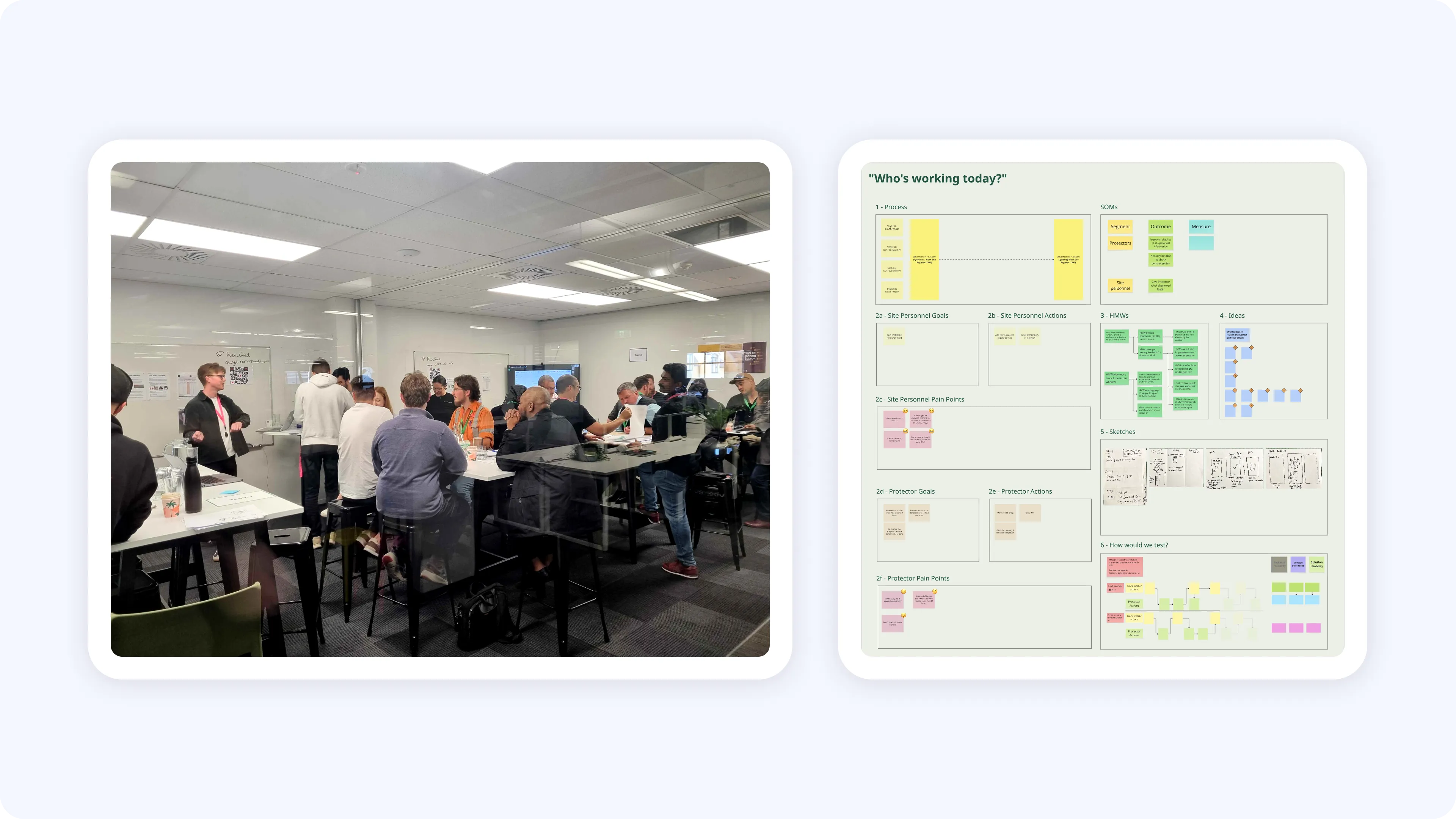
Proof of concept
Rather than creating a typical clickable prototype, we developed a lean proof-of-concept that could be tested alongside the current physical process, developing the following features:
- Digital check-in/check-out: QR code scanning replaced manual sign-in and physical padlocks
- Safety alerts: Automatic notifications for extended work durations and fatigue management
- Simplified interface: Large buttons, clear CTAs, and WCAG AAA accessibility compliance
- Mobile-first design: Optimised for the devices Protectors preferred using in the fields
- Worker verification: Photo profiles helped identify workers and build team connections
With a successful business case owned by the product lead and union approval , we were cleared to run a pilot in parallel with the existing system.
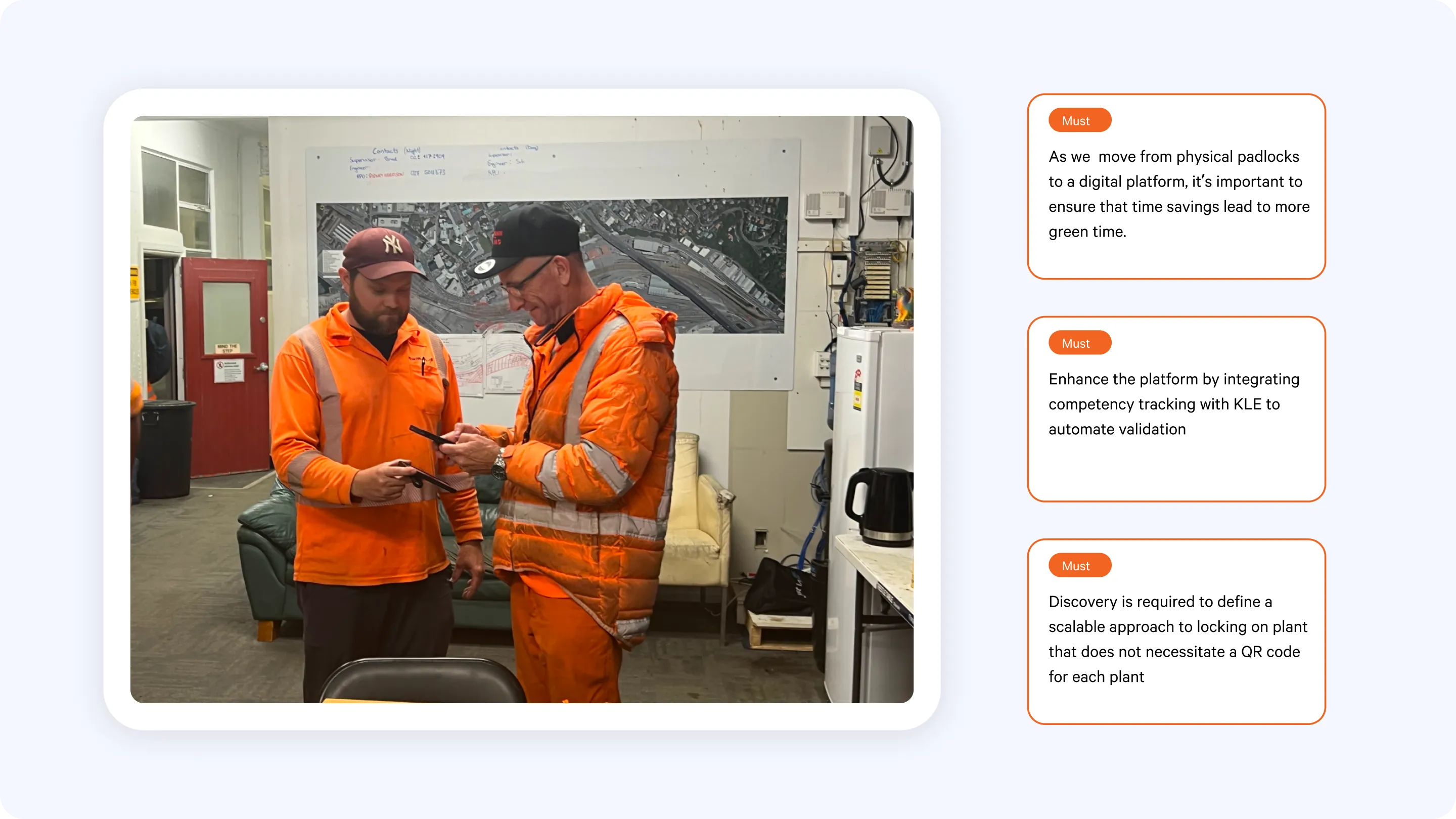
Pilot
The pilot was substantial in scope, operating over 45 days, with 253 participants and an average of 97 track workers per shift. In total, the system processed 8,740 lock on/off events, providing robust testing under demanding conditions.
- Day 1: "Why are we doing this? There's nothing wrong with the current system."
- Day 2: "Oh yeah, this is pretty easy and quick."
- Day 3: "This is mean [excellent], can we stop with the original process?"
Quantitative insights
The pilot generated compelling data that validated the platform's potential:
- 80% reduction in the time taken to sign on
- 8,740 lock on/off events processed successfully during the pilot
- All of Protectors expressed enthusiasm about transitioning to the digital platform
Qualitative outcomes
- Improved ability to monitor worker fatigue through shift duration tracking and color-coded alerts
- Enhanced worker verification through photo profiles, significantly improving safety confidence
- User feedback indicating equivalent or improved perceived safety levels with the digital system
- Creation of a foundation for real-time worker location tracking across the network
- Increased trust in digital transformation within KiwiRail
By focusing on a specific high-impact area and delivering measurable results, we've created momentum for further digital initiatives across the organisation.

Building partnership
Working on the Digital 902 project reinforced the importance of meeting users where they are. By respecting existing processes while carefully introducing digital enhancements, we achieved adoption rates that exceeded expectations. The project's success stemmed from our commitment to understanding the complex operational environment of rail safety before proposing solutions.
The co-design approach—bringing together diverse perspectives from frontline workers to executives—created a solution with broad ownership that addressed needs across the organisation. This inclusive methodology not only improved the end product but also smoothed the path to implementation by building advocacy throughout the process
Most importantly, we demonstrated that even in high-risk, safety-critical environments with low technological adoption, thoughtful digital transformation can deliver significant value when approached with humility and a genuine commitment to user needs
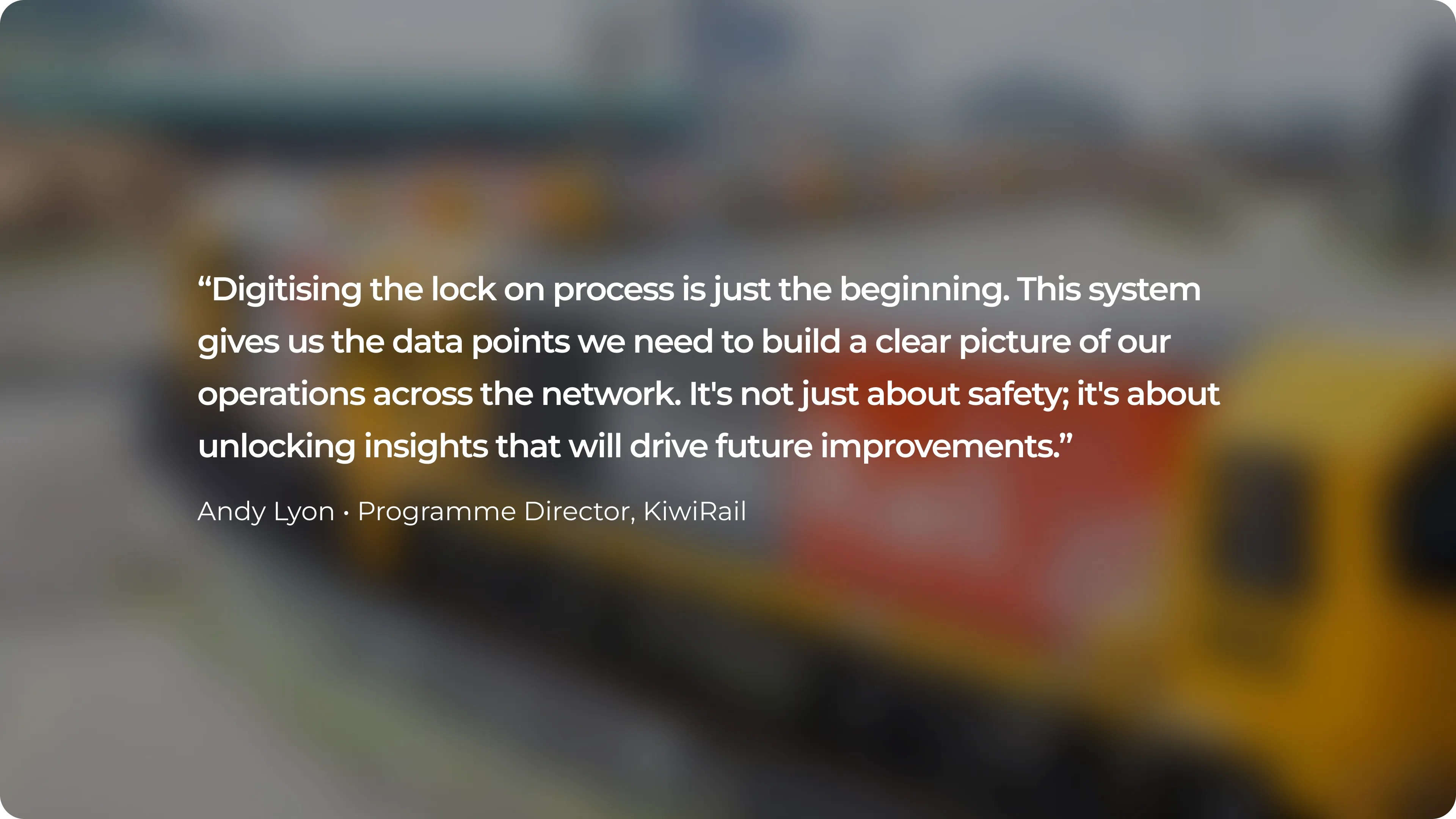
Testimonials
Stephen Horner
Chief Strategy Officer - RUSH Digital

Combine that with being a crisp communicator, effective stakeholder manager and direction setter, Cam is able to translate business strategy into design execution no matter the environment he finds himself in. If you’re looking for your next high impact design hire, look no further.
